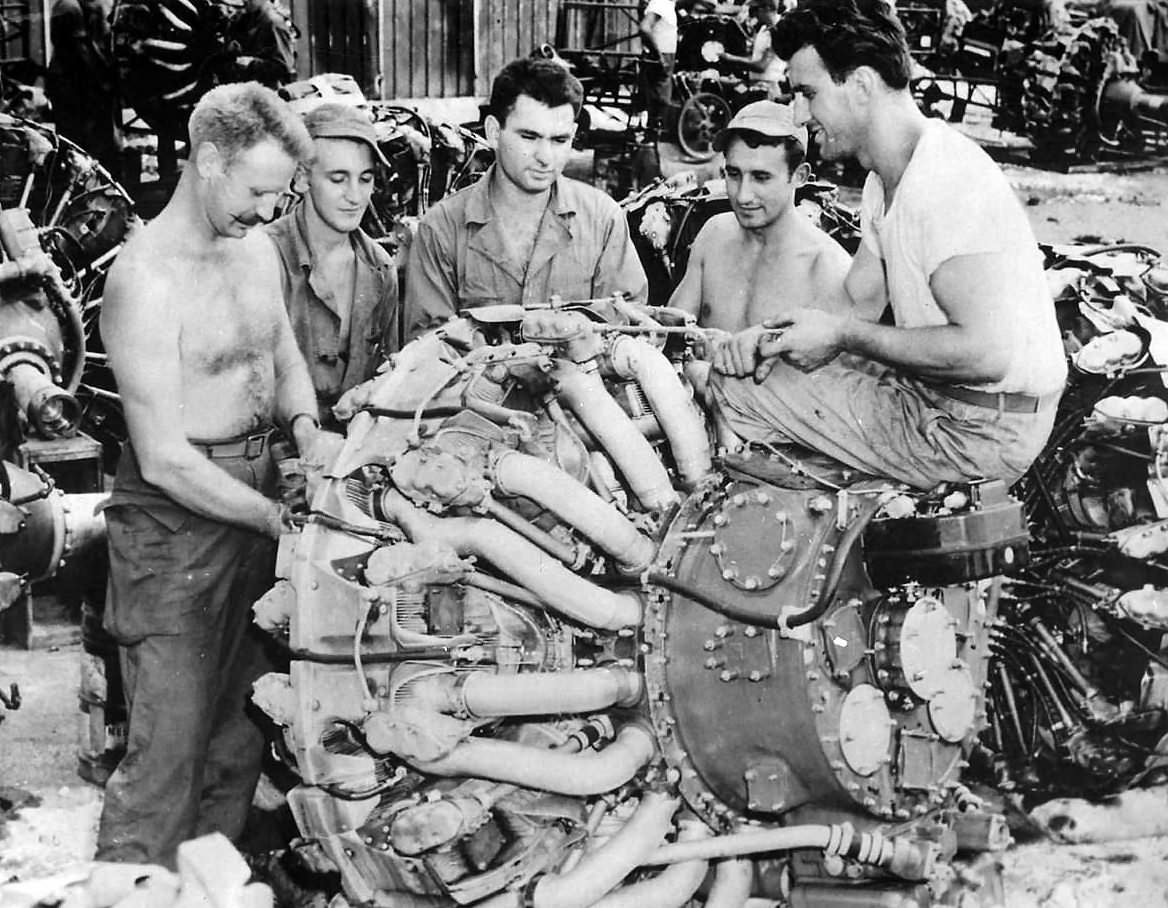The Wright R-3350 Duplex Cyclone was one of the most complex and challenging engine projects undertaken during World War II. It played a crucial role in powering the Boeing B-29 Superfortress, among other aircraft, but was notorious for the numerous technical difficulties and reliability issues it presented.
Design and Development
Configuration: The R-3350 was a 2,200 hp, 18-cylinder, two-row radial engine with a displacement of 3,350 cubic inches (54.9 liters). It shared the same bore and stroke dimensions (6.125-inch bore and 6.3125-inch stroke) as the R-2600, with the additional displacement resulting from four extra cylinders.
Crankcase and Internal Mechanisms: The engine utilized a three-piece crankcase, initially made from aluminum forgings, later replaced with steel for enhanced durability. The crankshaft was supported by three roller bearings and featured two massive dynamic counterweights per row to dampen vibrations. However, early issues with crankshaft vibration led to additional second-order counterweights being added, driven off the cam plates, to reduce stress on the propeller shaft and prevent fatigue failures.
Cylinder Design: The cylinders followed the design practices of the R-2600, including the use of nitralloy forged barrels with “W” finning for cooling. Despite extensive cooling surface areas, maintaining adequate cooling under high-power conditions remained a persistent issue, particularly due to design compromises like forward-facing exhaust ports on the front row cylinders.
Supercharging and Fuel Systems
Supercharging: The R-3350 initially used a single-stage, two-speed supercharger and later included turbo-supercharging with General Electric B-11 units. Wright Aeronautical also developed their own supercharger design, achieving efficiencies comparable to the Rolls-Royce Merlin’s superchargers. Improvements in the supercharger design, including inlet elbow modifications, significantly enhanced performance, with efficiency reaching 81% by 1943 at a pressure ratio of 2:1.
Fuel Systems: The engine faced issues with poor mixture distribution, leading to lean conditions in front cylinders. This problem was later addressed by incorporating direct fuel injection systems, such as the Bendix Stromberg nine-plunger units, providing precise fuel delivery to individual cylinders. This change reduced the risk of induction fires, a common problem with earlier carbureted models.
Operational Challenges and Solutions
Reliability Issues: The R-3350 was plagued with problems throughout its development and operational life. These included overheating, mechanical failures, and vibration issues, which were partially mitigated through numerous engineering changes and improvements. Overhaul times improved significantly from 100 to 400 hours by the end of the war.
Manufacturing and Production: Wright Aeronautical and Dodge Chicago Division of Chrysler were the primary manufacturers. The decision to maintain cast cylinder heads, despite potential advantages of forged ones, was influenced by delays in tooling. The production process faced significant disruptions due to the implementation of over 48,500 engineering changes. Dodge Chicago produced the majority of the engines during the war, totaling 18,413 units compared to Wright Aeronautical’s 13,791.
Performance and Application
- Power Output: During World War II, the R-3350 was rated at 2,200 hp at 2800 rpm and 48 inches of mercury (inHg) manifold pressure, with a war emergency rating allowing for up to 2,500 hp under extreme conditions. Despite its challenges, the R-3350’s power and eventual reliability improvements made it a crucial component of the B-29’s success.
The Wright R-3350’s development history is a testament to the challenges of advanced aero-engine design during wartime, combining high performance with significant engineering and operational challenges.
